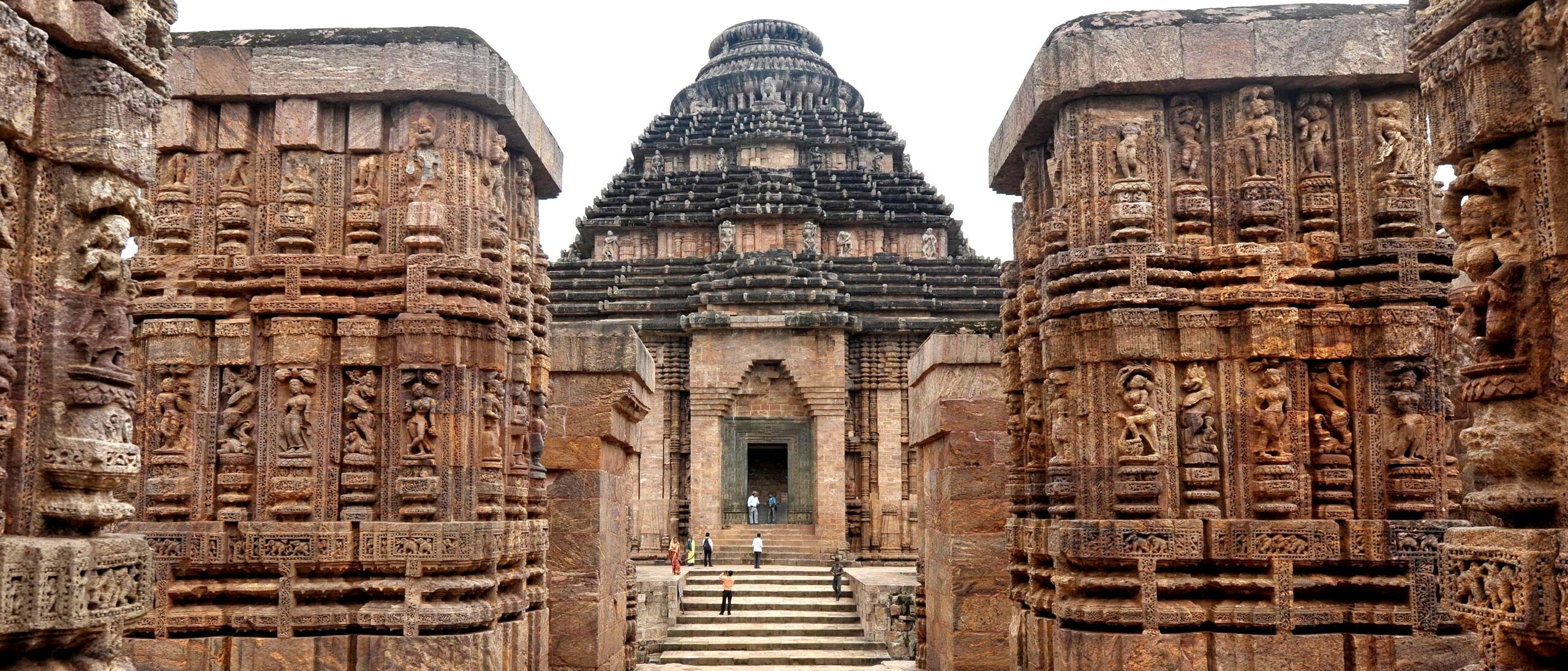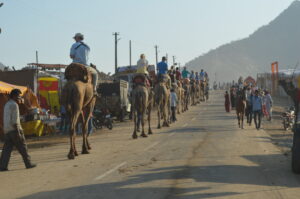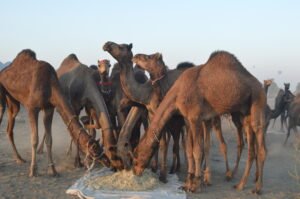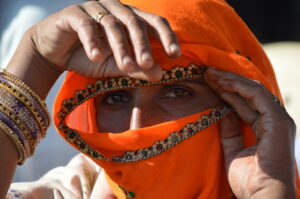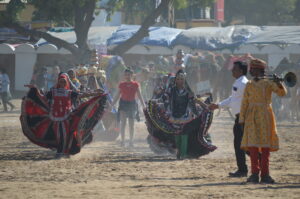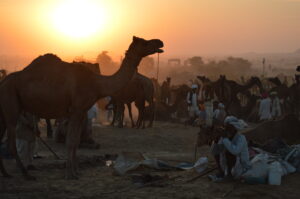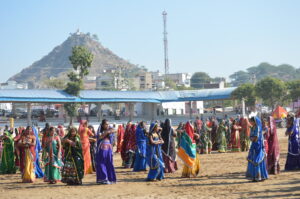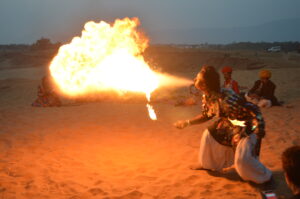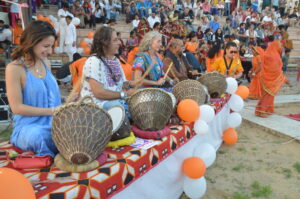Description
Group Size: Up to 15 participants
Tour Grading: Easy to Moderate
Activity: Cultural, Arts, Heritage, and Colors of the Festival
Sights: Twin cities of Old and New Delhi, Jama Masjid, Taj Mahal, Agra Fort, Fatehpur Sikri, Samod, and Pushkar Festival
Best Season: 2024 Puskar Festival Dates (November 9–15)
Trip Route: Delhi-Agra-Samod-Pushkar-Jaipur-Delhi
Overview: This fabulous package tour takes you to three wonderful places along with sightseeing in the National Capital, Delhi. Jaipur, the capital city of Rajasthan; Pushkar, one of the sacred religious places; and Agra, the famous city housing the Taj Mahal, will give you different flavors of enjoyment.
The Pushkar Festival, or Pushkar Fair, happens to be one of the most popular and colorful festivals celebrated in the captivating land of Rajasthan. Also known as Pushkar ka Mela, this is a livestock and camel fair that takes place in the holy town of Pushkar. It infuses a spirit of carnival into the dusty grounds of the town at the onset of every winter. As November comes, the desert starts bustling with life and activity.
Trip Highlights
The twin cities of Old and New Delhi
Jama Masjid, the longest and best-known mosque in India
Taj Mahal, an enduring monument to the love of a husband for his beloved wife
Agra Fort was built by the Mughal Emperors starting from Akbar the Great in 1565 A.D
Fatehpur Sikri – a magnificent fortified ancient city that was a short-lived capital during the reign of Akbar the Great
Various attractions in Samod
The famous Camel Fair in Pushkar
Day 1: Arrival in New Delhi
Delhi: Perhaps there is no other capital city in the world so steeped in history and legend as the Indian capital, Delhi. It was the magnet that drew the Mongols, Turks, Persians, Afghans, Mughals, and the British, all of whom contributed to its glorious but turbulent past. The fascination with Delhi was such that even though it was abandoned many times, its rulers returned to it again and again, rebuilding it at least seven times. Today, the twin cities of Old and New Delhi still intrigue Indians and tourists alike as the cultural and political capital of the largest democracy in the world.
Day 2: Delhi Sightseeing
Morning breakfast at the hotel, and later on depart for a combined sightseeing tour of New Delhi.
Jama Masjid: It is the largest mosque in India, at a height of 40 meters, where you can view Delhi from the minarets of this last architectural project by Shah Jahan.
Qutub Minar: In 1199, Qutbuddin raised the Qutab Minar either as a victory tower or as a minaret to the adjacent mosque. From a base of 14.32 meters. it tapers to 2.75 meters. at a height of 72.5 meters. It is still the highest stone tower in India, one of the finest stone towers in India, one of the finest Islamic structures ever raised, and Delhi's most recognized landmark. It was completed by the Sultan’s successor and son-in-law, Iltutmish. The tomb of Iltutmish, which he built in 1235, is nearby, Its interiors are profusely decorated with calligraphy, though the dome has collapsed
Day 3: Agra Sightseeing
Drive to Agra in the morning. Sikandara: En route, you will be visiting Sikandra, which is 18 km before Agra. Six miles north of Agra is a glorious introduction to the city of Mughal wonders, Sikandra. The site of Akbar’s mausoleum, Sikandra, was begun by Akbar and completed by his son Jehangir in 1613 AD. It reflects the fusion of Hindu and Muslim art and architecture that characterized the era. The tomb is situated in the center of a large garden, and four identical red sandstone gates lead to the tomb complex. The building, with three-story minarets at each corner, is built of red sandstone with white marble polygonal patterns inlaid. Sikandra is named after Sikandra Lodi, the Delhi ruler who was in power from 1488 to 1517.
Continue driving to Agra. On arrival at Agra, you will be checked into the hotel. Lunch will be at the hotel, and then you will start the sightseeing tour of Agra.
Taj Mahal: Described as the most extravagant monument ever built for love, it was constructed by Mughal Emperor Shah Jahan as a memorial to his queen, Mumtaz Mahal. Made out of white marble, it took 22 years to complete (1630–1652 AD). Ustad Ahamad Lahori, a Persian architect, is said to be the main designer and planner for this magnificent memorial. On full moon nights, the glory of the Taj is at its best. Over the centuries, the Taj has attracted more visitors than perhaps any other monument in the country, and it is all too easy to resort to conventional superlatives when describing it. What makes the Taj unique is its perfect proportions, distinct femininity, medium of construction, and ornamentation. Its marble exterior reflects rose and golden tints at sunrise and sunset, while it is dazzling white during the day and glows pearl-like in the moonlight and during the monsoon.
Agra Fort: Construction of the massive red sandstone Agra Fort on the bank of the Yamuna River was begun by Emperor Akbar in 1565, though additions were made up until the rule of his grandson, Shah Jahan. In Akbar’s time, the fort was principally a military structure, but during Shah Jahan's reign, it had partially become a palace. It is an imposing structure with walls of red sandstone that are almost three kilometers long. Entered through the Amar Singh Gate, the eastern part of the fort contains a palace, an audience hall, and mosques built by three emperors. The fort presents a good sampling of their favored architectural styles. Evening free for shopping or at leisure.
Day 4: Samod Sightseeing
After breakfast, drive to Samod and, en route, visit Fatehpur Sikri. Towards the evening, we will reach Samod Palace. Here, enjoy the evening welcome ceremony and explore the palace with a delicious dinner.
Overnight stay in the hotel.
Day 5: Pushkar
In the morning, explore attractions around Samod and visit a few Rajasthani villages, depending on the time available. We will then drive forward to Pushkar. After lunch, explore the Camel Fair and enjoy the camel ride.
Overnight stay in the hotel.
Day 6: Pushkar
After breakfast, explore the Camel Fair again, and if you wish, take up some time for exclusive photographs. Witness the colorful fair and later visit the Pushkar Fort and Temple.
Overnight stay in the hotel.
Day 7: Jaipur Sightseeing
After breakfast in the hotel, drive to Jaipur. Evening free at your leisure, explore Jaipur market.
Overnight stay in the hotel.
Day 8: Jaipur Sightseeing
Full day in Jaipur with local sightseeing; explore Amber Fort, Hawa Mahal, Jal Mahal, and Birla Temple. Evening visit Chokki Dhani Resorts to enjoy Rajasthani dinner with local dance.
Overnight stay in the hotel.
Day 9 - Departure
After breakfast, you drive to Delhi. On arrival do a little bit of shopping in Delhi and later transfer to the International airport to board the flight to your country.

